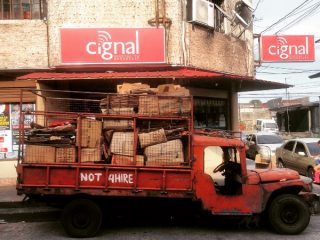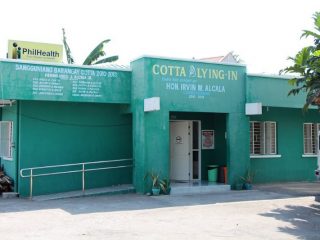I love the Philippines. The people, culture, and natural beauty (outside Manila)… but my love for the country stops at the airports.
If you’re travelling to or from Manila, you’ll most likely pass through NAIA (Ninoy Aquino International Airport), or if travelling on a budget carrier such as Air Asia you may fly into Clark’s Diosdado Macapagal International Airport, a former US Air Base about 2 hours bus ride north of Manila.
NAIA consists of three terminals, Terminal 1 being used by all international flights except Cebu Pacific Air and Philippines Airlines, Terminal 2 for the exclusive use of Philippines Airlines (domestic and international), and Terminal 3 being predominantly used by Cebu Pacific Air for both international and domestic destinations. Due to Government regulations, I can’t take any photographs of these airports (the Philippines prohibits photographing any Government buildings without a permit), but if I had to sum up I’d have to say they’re a national embarrassment – the first and last impression of visitors to Manila is invariably either disgust, frustration, contempt, or all three combined.
Terminal 1 was opened in 1981 and has been operating over it’s designed capacity since 1991. It feels like it’s from the 1950s, and has 100 years grime throughout it. It’s a poorly maintained monstrosity, accompanied with inane and cumbersome ‘security’ procedures which ensure that noone would ever choose to enter the airport, but would only do it out of necessity. Visitors who are not travelling on a plane are prohibited from even entering the terminal proper, and are compelled to wait in the ‘Arrivals Extension’ which is little more than a claustrophobic shed across the far side of the arrivals driveway. If you need to collect unaccompanied minors arriving from an international port, as was the case for me this week, the process becomes even more unfathomable.
Terminal 2 was opened in 1998 and I’ve only been through it a couple of times, when I flew with Philippine Airlines in 2009. My recollections are hazy, but I recall on departure going through about 4 security scanners, including being asked to get up from our gate lounge and queue again for a final security check at the gate lounge (this is apparently an additional procedure demanded by Australian authorities for flights to Australian destinations, presumably because they’re not satisfied with the 3 earlier scans you come through to reach the gate lounge)!

Terminal 3 is physically a substantially better structure than either T1 or T2, being only a couple of years old, and visitors collecting arriving guests are free to enter the building, where there is a decent café at the arrivals area selling good latté, pandesal, cookies, and free wi-fi. However, again, the mentality of the management detracts from what should otherwise be a satisfactory airport experience. Management have made a number of stupid decisions, such as removing all plastic trays from the security scanning area despite the fact you’re expected to remove your shoes, belt, coins, and mobile phones from your person – so you have to open your hand luggage and shove everything into that bag, and then retrieve it when you get to the other side. Likewise, a “Smoker’s Lounge” adjacent to Gate Lounges ensures that all passengers, whether smokers or not, are subjected to the putrid smell of stale cigarettes that inevitably escapes the lounge and permeates the rest of the building. Once checked in and scanned into the secure gate lounge area, there is an array of cafés including Mrs. Fields, illy Coffee, Nescafé Coffee Station, and more each time I’ve travelled through Terminal 3 I’ve found them to be disappointing – today, Mrs. Fields had no coffee except black brewed coffee, Illy only offer their coffee in paper cups, the airport’s “Free Wi-fi” wasn’t working (as per normal), and the only place that had serviceable wi-fi had dismal coffee.
If you arrive in Philippines at Clark Airfield, the terminal is primitive but at least the immigration process and baggage collection is relatively straightforward. There are only two ATM’s at the airport, and usually one of those isn’t working, but there are currency exchange facilities inside the arrivals area. Like NAIA Terminal 1, Clark doesn’t allow visitors into the airport, and even departing passengers are required to sit on plastic chairs outside the airport until 9am, when the doors open for the first check-ins.
When you arrive at Clark, you’ll probably want to grab a shuttle bus heading to Manila, and there are about 8 representatives of the shuttle bus companies jostling in their corner for your attention just yards from the terminal exit. A fare to Manila will cost about Php 350 (approx. US$8) and will take you down the NLEX (North Luzon Expressway) to the main EDSA highway passing from North to South of Manila via Quezon City, Ortigas, Pasay, and Makati. Basically, you can’t go too far wrong… my only word of warning: get on a big bus, because if you’re on a small bus with a light load, it’ll bounce up and down and almost break your neck when you get to the EDSA highway (which has kilometres of terrible ruts!).


